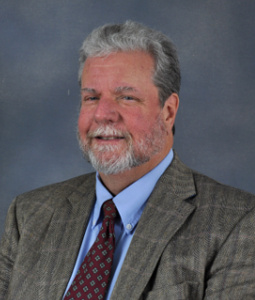Department of Chemistry and Biochemistry
Faculty and Staff Directory
Timothy J. Shaw
| Title: | Professor / Analytical Environmental / Inorganic / Spectroscopy |
| Department: | Chemistry and Biochemistry McCausland College of Arts and Sciences |
| Email: | shaw@mailbox.sc.edu |
| Phone: | 803-777-0352 |
| Fax: | 803-777-9521 |
| Office: | Office: GSRC 206 Lab: GSRC 204, 803-777-2044 Lab 2: GSRC 218, 803-777-3129 |
| Resources: | CV [pdf] All Publications Publication History Department of Chemistry and Biochemistry |

Education
B.S., 1981, California State Polytechnic University, Pomona
Ph.D., 1988, University of California, San Diego, Scripps Institution of Oceanography
Honors and Awards
Fellow at the Hanse-Wissenschaftskolleg (Institute for Advanced Study), Delmenhorst, Germany, 2010-2011; Fellow at the Hanse-Wissenschaftskolleg (Institute for Advanced Study), Delmenhorst, Germany, 1999.
Research
Trace element geochemistry, environmental analytical chemistry; techniques development for trace elements of both anthropogenic and natural origin in the environment; geochemical cycling of trace elements in the environment.
My work is focused on identifying factors that control the exchange of trace elements between the dissolved, particulate and biogenic phases in both the marine and fresh water systems. The goal is to identify the processes that control cycling and trophic transfer of trace elements and trace contaminants in the environment. Toward this end, my group routinely measures trace elements and tracers in groundwater, seawater, sediments, particulates (both inorganic and biogenic) and icebergs. In order to make these measurements, we also develop analytical techniques for trace element analysis in aqueous, colloidal, and solid phases and design and build sampling equipment. We maintain a clean room facility, and a radiochemical analysis laboratory that includes multiple coincidence counters for analysis of 223Ra and a 224Ra as well as 227Ac isotopes, and a low level Beta counter for 234Th analysis. We work closely with the departmental elemental mass spectrometry facility that includes two High Resolution Inductively Coupled Plasma Mass Spectrometers (HR-ICP-MS). My group is in the midst of a program to examine the impact of groundwater mixing and exchange at the terrestrial/ocean interface. Currently, this work is focused on characterizing the processes that lead to the production of Reactive Oxygen Species at the groundwater/seawater interface as a function of the oxidation of Fe(II). This work is part of a combined set of laboratory/field experiments with Dr. John Ferry's research group.
We have also participated in several NSF funded projects to evaluate the role of free drifting icebergs as a micronutrient source in the Southern Ocean. This work is part of a large collaborative program with Dr. Ken Smith at the Monterey Bay Aquarium Research Institute (MBARI). These projects involve the measurement of tracers of carbon export from the surface ocean and requires the development of specialized sampling equipment and new analytical methods. This work is part of a larger effort to characterize mechanisms of atmospheric CO2 sequestration in the Ocean as a function of climate change.
Selected Publications
P. Putnam, M. L. Smith, T. T. Metz, A. M. Womer, E. Sellers, S. J. McClain, C. A. Crandell, G. I. Scott, T. J. Shaw, John L. Ferry. (2022) Growth of the harmful benthic cyanobacteria Lyngbya wollei is driven by sedimentary phosphorous. Harmful Algae 117:102263. doi: 10.1016/j.hal.2022.102263.
Estes, D. Berti, A. Findlay, M. Hochella, T. J. Shaw, M. Yucel, E. De Carlo, Eric; G. W. Luther III. (2022) Differential behavior of metal sulfides in hydrothermal plumes and diffuse flows. ACS Earth Space Chem. 2022, 6, 6, 1429–1442 doi.org/10.1021/acsearthspacechem.1c00377
T. J. Shaw, G. W. Luther III, R. Rosas, V. E. Oldham, N. R. Coffey, J. L. Ferry, D. M. C. Dias, M. Yücel, A. Thibault de Chanvalon. Fe-catalyzed sulfide oxidation in hydrothermal plumes is a source of reactive oxygen species to the ocean. (2021) Proceedings of the National Academy of Sciences, Oct, 118-122.
T. J. Shaw, C. Boucher, C. L. Huffard, K. L. Smith Jr.,. (2020) Model Study of Oxygen Mass Transfer into Persistent Aggregate Layers in the Deep Sea. Deep Sea Res. II: 173, 104760
D.M.C. Dias, J.M. Copeland, C.L. Milliken, X. Shi, J.L. Ferry, T.J. Shaw. Production of Reactive Oxygen Species in the Rhizosphere of Spartina Dominated Salt Marsh Systems. Aquat. Geochem. 22:5-6, 573-592 (2016)
S.A. Murphy, S. Meng, B.M. Solomon, D.M.C. Dias, T.J. Shaw, J.L. Ferry Hydrous Ferric Oxides in Sediment Catalyze Formation of Reactive Oxygen Species during Sulfide Oxidation. Front. Mar. Sci. 3:227,(2016) doi: 10.3389/fmars.2016.00227
A.J. Findlay, A. Gartman, D.J., T.J. Shaw, G. W. Luther III. Trace metal concentration and partitioning in the first 1.5 meters of hydrothermal vent plumes along the Mid-Atlantic Ridge: TAG, Snakepit, and Rainbow. Chemical Geology, 117-131 (2015).
P. Böning, T.J. Shaw, K. Pahnke, H.-J. Brumsack Nickel as indicator of fresh organic matter in upwelling sediments Geochimica et Cosmochimica Acta, 162: 99–108 (2015), DOI: 10.1016/j.gca.2015.04.027.
A.J. Findlay, A. Gartman, T.J. Shaw, G,W, Luther. Trace metal concentration and partitioning
in the first 1.5 m of hydrothermal vent plumes along the Mid-Atlantic Ridge: TAG,
Snakepit, and Rainbow. Chem. Geol. 412: 117-131, (2015),
DOI: 10.1016/j.chemgeo.2015.07.021.
S.A. Murphy, B.M. Solomon, S. Meng, J.M. Copeland, T.J. Shaw, J.L. Ferry. Geochemical Production of Reactive Oxygen Species From Biogeochemically Reduced Fe. Env. Sci. Tech. 48: 3815–3821, (2014), DOI: 10.1021/es4051764.
A.J. Findlay, A. Gartman, D.J. MacDonald, T.E. Hanson, T.J. Shaw, G,W, Luther. Distribution and size fractionation of elemental sulfur in aqueous environments: The Chesapeake Bay and Mid-Atlantic Ridge. Geochimica et Cosmochimica Acta 142: 334-348 (2014), DOI: 10.1016/j.gca.2014.07.032.
T.J. Shaw, R.W. Raiswell, C.R. Hexel, H.P. Vu, W.S. Moore, R. Dudgeon, K.L. Smith.
Input, composition, and potential impact of terrigenous material from free-drifting
icebergs in the Weddell Sea. Deep-Sea Research II 58, 1376–1383 (2011),
DOI: 10.1016/j.dsr2.2010.11.012.